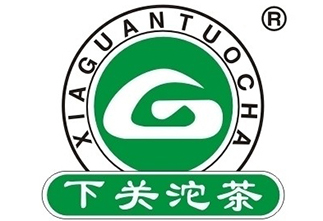-
0 Saturation
-
0 Aftertaste
-
0 Aroma
-
0 Effect
-
0 Balance
-
0 Body
Производитель: Завод Сягуань (кит. 云南下关沱茶股份有限公司, пиньинь yúnnán xiàguān tuóchá gǔfèn yǒuxiàn gōngsī)
When warmed by the breath, we feel a subtle, restrained aroma, with slightly perceptible leather shades.
After washing, a rich, penetrating aroma opens up with light spicy, smoky, herbaceous-fruity notes and nuances of dried fruits.
The brewed tea has a soft, slightly sweet flavor without bitterness or astringency, buttery, rich, moderately spicy, and harmonious. The flavors include wild honey, dried fruit, dried apricots, a hint of candy-like tartness, and ripe apple. Steeped, the tea retains its flavor profile well, gradually developing a slight tartness and herbal undertones.
The finish is long, full-bodied, fruity and floral, with leathery, herbal notes and a hint of dried apricot. Hints of medium-roasted Yerba Mate are also discernible.
This pu-erh can be brewed in a gaiwan, a Yixing clay teapot, or a tea flask. The recommended brewing ratio is 7 grams of tea per 100 ml, using quick steeps.
The 2013 Red Seal Sheng Pu'er from the Pine and Crane brand at Xiaguan, like many Xiaguan shengs, imparts a powerful tea experience with a strong Cha Qi. The tea instantly induces a feeling of warmth, with sweat appearing on the forehead and a rapid warming of the entire body.
It's incredibly relaxing, allowing you to rest, calm down, and recharge. It sobers you up, improves concentration, and makes your eyes sharp and your vision clear. It can also immerse you in a meditative state.
This is one of the best sheng teas from a renowned factory, made from high-mountain raw materials from mature trees. It is very soft, sweet, and buttery in flavor, while leaving a very powerful tea state.
|
Name in Chinese
|
红印 |
|
Pinyin
|
Hóng yìn |
|
English name
|
Red Seal |
|
Translation
|
Red Seal |
|
Country
|
China |
|
District
|
Dali-Bai Autonomous Okrug |
|
Provinces
|
Yunnan (云南) |
|
Region
|
Dali Bai Autonomous Prefecture (大理白族自治州) |
|
Habitat
|
Дали (大理, dàlǐ) |
|
Manufacturer
|
Сягуань (云南下关沱茶集团) |
|
Raw material production date
|
2013 |
|
Year of pressing
|
2013 |
|
Pressing form
|
Bing Cha (Cake Tea) |
|
Declared weight, g
|
357 |
|
Tea tree (bush) variety
|
Da Ye Zhong |
|
Size
|
20x20x2 |
|
Length, cm
|
20 |
|
Width, cm
|
20 |
- Reviews
- Vkontakte
Xiaguan Tea Factory has a history of over 70 years. It was founded in 1941 and is located in Dali, Yunnan Province, which is often called the Eastern Switzerland. Beautiful nature and favorable weather, mountains and crystal clear lakes make it possible to produce excellent quality puer. Xiaguan Tea Factory is one of the main producers of pressed tea in China. It produces over 6,000 tons of puer tea annually. Xiaguan Factory produces both Shu puer and Sheng puer. However, the most popular and recognized are Sheng puer tocha (in the form of a nest, bowl) and bingcha (in the form of a pancake).

















































































